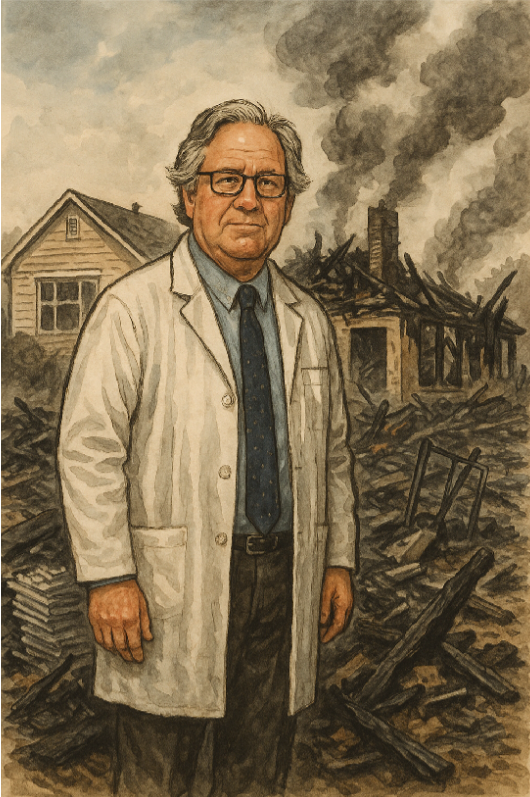
Summary of an Interview with
Dr. Larry Stock, IEPC member,
Antelope Valley Hospital
On January 7, 2025, IEPC member Dr. Larry Stock lost two homes, his and his parents.’ The Southern California wildfires killed at least 30 people and destroyed more than 18,000 homes. The Palisades Fire was one od the largest fires and where Dr. Stock lived.
Here are some of his fire victim tips that include: 1. Watching, 2. Preparation, 3. Taking Off, and 4. Recovery.
Tip 1: Watching
Watch duty is the application used by fire fighters and available to the public. This is the best source of tracking the fires, the perimeters, power outages, and more. The other watching source is wind direction. Knowing where the fire was and the wind was going allowed for the best decision on whether to evacuate, fight the fire, or continue to monitor.
Tip 2: Preparedness
It is a good idea to digitize important documents such as Passports and insurance policies and keep them on the cloud. After a fire, you are asked to itemize everything that was lost. Taking a video of your house, including opening drawers and recording the contents makes that process mush easier. That video should be on your phone or on the cloud where is not a victim to the fire. A firesafe is not always fireproof. It is advised to think ahead on what you would take out of your home if you had 5 minutes, if you had 1 or 2 hours. Some people prioritize pictures and mementos. Others go first for the computer and documents. Larry had one hour and one car load of things to get out.
Tip 3: Taking Off
Emergency Physicians are givers. Our nature and profession are serving and helping others. Being a fire victim, Dr. Stock was in the uncomfortable position of receiving. He evaluated with only the clothes on his back and did not have time to go shopping with all the other tasks that were a priority. He felt like he was dropped off on Earth and had to restart. Larry pivoted from giver to and receiver. His friends provided shelter, clothing, and support in the immediate aftermath.
Tip 4: Recovery
There are great frustrations in dealing with fire insurance, government assistance, and rebuilding. They continue to this day and are a full-time job. Larry stayed with friends, an Airbnb, and now is renting a house previously owned by Clark Gable. He is still working on a permanent residence. FEMA and government assistance was promised to many fire victims. One attractive program was through the Small Business Administration offering a $500,000 loan with 3% interest and a 30-year term. Larry describes going through a financial colonoscopy of personal information to apply for this loan. After two weeks of intense application, he was informed that people with good insurance and resources were not eligible. It would have been nice to know that at the beginning.
Larry points out a major benefit of being part of an independent group. His emergency physician partners are his brothers and sisters. They protected him. His group gave him 6 weeks off before returning to a reduced schedule. To his surprise, they also paid him during those 6 weeks as though he was working. That degree of empathy and kindness is rare in the workplace.
Losing a home is a phychosocial and financial toll. It’s a trauma. Thankfully, as an emergency physician, having resiliency and ability to make important decisions with incomplete information is our asset. Dr. Stock remains optimistic.
